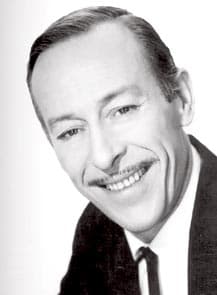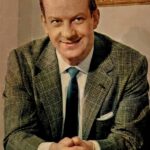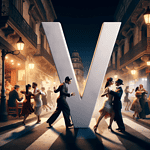Introduction
Roberto Goyeneche, affectionately known as El Polaco, was a figure of monumental significance in the world of Tango. His unique vocal style and interpretative genius left an indelible mark on the genre, making him one of the most revered and iconic figures in Argentine music.
Roberto Goyeneche is also one of the most controversial tango artists. Starting out as a singer that aligned with the Gran Orchestra discipline, he soon started reinventing tango singing. To many dancers his songs are a red flag – they may exit the dance floor saying this is not real tango. For others, the poetic and narrative interpretations of Goyeneche represent the transition to a modern Tango, similar to what Astor Piazzolla has done as composer, arranger, and musician for the instrumental composition, arrangements, and performances.
Early Life and Background
Born in the Buenos Aires neighborhood of Saavedra, Goyeneche grew up in a Tango family (with a tango author of the same name as one of his predecessors). This early exposure would later influence his unique style and approach to Tango.
The early years – Roberto Goyeneche for Dancers
Goyeneche’s professional career began in the 1940s, and he quickly distinguished himself with his unique style and contribution to Tango. His performances were marked by a deep emotional connection to the music, and his collaborations with other artists further enriched his musical repertoire. His discography, available on Discography, is a testament to his prolific career and his enduring influence on Tango.
The 1940s are considered the classic period of Argentine tango. Hundreds of thousands, if not millions of Portenos would dance tango every weekend, there were hundreds of orchestras playing at live events and the most famous were competing on the radio to get the attention of the wider public. While singers were popular, the real stars were the orchestras, which had a trademark sound that catered to the dancers. Of the 3 minutes of tango song, the singers would often only get a minute of the spotlight, entering only when the orchestra had laid out the sound basis after a minute introduction.
Roberto Goyeneche came a bit late to the party. Although he had his first engagements as an 18-year-old in 1944, it was only in 1952 that he got a stable role as the singer of the Orchestra Horacio Salgan. In 1956, at 30 years old, he moved on to sing with the orchestra of Anibal Troilo, a time when Tango was already on the decline.

Both Salgan and Troilo were innovators in Tango. While in the 1940s orchestras catered closely to the needs of the dancers, the shifting focus away from tango dancing in the 1950s gave the musicians more creative options. Roberto Goyeneche was in the middle of the process and helped shape it.
Goyneche started out as a disciplined orchestra singer, as can be heard in his duos with Ángel Cardenas with Troilo´s orchestra. The duo and solo interpretations with Troilo represent some of the most remarkable (and still danceable) recordings of the 1950s.
Goyeneches later years – a developing (and declining) voice
After leaving the orchestra, Goyeneche entered intense work collaborations with different smaller ensembles, experimenting stylistically. He became more of a storyteller, taking more rhythmic freedom, drifting in and out of the timing given by the beat. He started to sing with more spontaneity and abandon as if the music were speaking to him directly.
But also, in his later years, Roberto Goyeneche’s voice changed. While his expressiveness remained exceptional, his range and musical preciseness faded. Adriana Varela sings a hommage about Goyeneche “Garganta con arena”, where she gives her own interpretation about the aging of his voice.
Goyeneche kept singing almost until his death, and one of the most remarkable late performances is “Vuelvo al Sur” in cooperation with Astor Piazzola.

Legacy and Influence – is it for dancers?
Tangos by Roberto Goyeneche are not often part of the typical Milonga repertoire. Since in many of the recordings, Goyeneche´s expressive singing is so dominant, unexperienced dancers may be struggling to find a clear beat.
Goyeneche passed away in 1994, leaving behind a rich musical legacy. His death was mourned by fans and fellow artists alike, and he continues to be remembered through tributes and recognitions for his contributions to Tango.
In conclusion, Roberto Goyeneche’s life and career were characterized by a deep love for Tango and a unique interpretative style that set him apart. His legacy continues to influence Argentine music, making him a timeless figure in the world of Tango. For a more comprehensive biography of Goyeneche’s life and career, visit Todo Tango.
External Links:
- Roberto Goyeneche’s Discography – A complete list of Roberto Goyeneche’s music albums and singles.
- Roberto Goyeneche on Last.fm – Listen to Roberto Goyeneche’s music and learn more about his musical style.
- Roberto Goyeneche’s Biography on Todo Tango – A comprehensive biography of Roberto Goyeneche’s life and career






